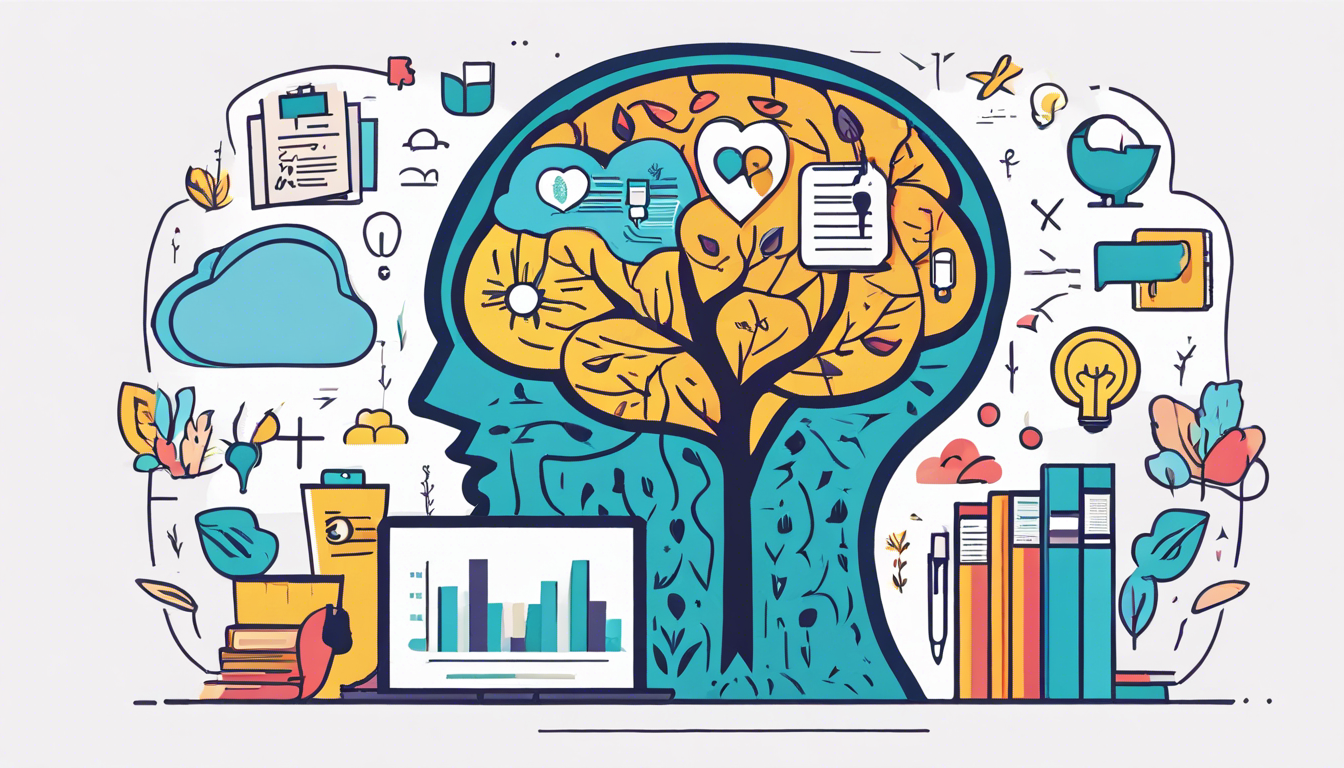Understanding Catastrophizing
Catastrophizing is a cognitive distortion characterized by imagining the worst possible outcomes, often driven by fear and anxiety. It can lead to heightened stress levels and negatively impact mental well-being. While not classified as a mental illness, it can be a risk factor for conditions like depression and anxiety.
Origins of Catastrophizing
The term “catastrophizing” originated from Albert Ellis and Rational Emotive Behavior Therapy in the 1960s, highlighting how individuals prone to anxiety and depression tend to focus on worst-case scenarios. Challenging these negative beliefs can help alleviate distress and enhance resilience.
Causes of Catastrophic Thinking
Catastrophizing is often rooted in past experiences, traumas, and learned behaviors, fueled by fear and anxiety. It may serve as a coping mechanism or defense mechanism against disappointment. Stress, health concerns, conflicts, life changes, and losses can also contribute to catastrophic thinking, potentially indicating underlying mental health issues.
Brain Connectivity and Catastrophizing
The default mode network, a network of brain regions influencing our inner thoughts and narratives, may play a role in reinforcing catastrophic thinking patterns. When communication within this network is disrupted due to factors like trauma, anxiety, or depression, it can perpetuate negative thought cycles.
By understanding the concept of catastrophizing, recognizing its signs and symptoms, and implementing strategies to manage and challenge these negative beliefs, individuals can work towards breaking free from the cycle of catastrophic thinking and promoting better mental well-being.
Recognizing Signs of Catastrophizing
Catastrophizing can manifest in various ways, but certain common signs can help identify its presence:
- Magnification: Our minds tend to exaggerate potential negative outcomes, turning minor worries into looming threats that cast doubt on the future. Asking “What if something bad happens?” becomes a recurring thought.
- Rumination: Being caught in a loop of thoughts, endlessly dissecting scenarios and fixating on possible results characterizes rumination. These thoughts may recur like a broken record, seemingly impossible to escape.
- Feelings of Helplessness: Falling into catastrophizing can lead to a sense of hopelessness, where we convince ourselves that things will never improve despite our efforts. It feels like being trapped in despair with no way out, fostering thoughts like “Things will never get better no matter what.”
These subtle signs can serve as gentle nudges to pause, breathe, and reassess our thinking patterns. Recognizing and acknowledging these tendencies in advance empowers us to challenge them and nurture a more balanced perspective. Self-awareness marks the initial step towards transformative change.
Conditions Linked to Catastrophizing

Catastrophizing can exacerbate various conditions or comorbidities, including:
Chronic Pain
Catastrophizing is a common companion for individuals with chronic pain, intensifying their suffering by dwelling on and amplifying the perception of pain. This automatic thought pattern, known as pain catastrophizing, worsens pain experience and may lead to increased stress, hopelessness, and depression.
Depression and Anxiety Disorders
In depression, catastrophizing magnifies worries about the future and reinforces feelings of hopelessness, hindering one’s ability to experience joy and hope. Anxiety disorders involving catastrophizing breed a constant state of fear, making relaxation and a sense of safety challenging to attain.
Fatigue
Constant worrying associated with catastrophizing can contribute to feelings of chronic fatigue, weighing heavily on the mind and sapping energy reserves. This mental burden can make it difficult to engage in activities that bring pleasure and fulfillment.
By recognizing the signs of catastrophizing and understanding its impact on various conditions, individuals can take proactive steps to challenge negative thought patterns and foster resilience and well-being.
Catastrophic Thinking in Adolescents and Children
Catastrophic thinking is not limited to adults; it can also impact children and adolescents, albeit in distinct ways. In children, this thought pattern often manifests as excessive worry regarding daily events or situations. They may envision the worst outcomes, such as failing a test or facing rejection from friends, leading to overwhelming feelings.
For teenagers, catastrophic thinking can escalate during periods of significant change or stress, like transitioning to high school, coping with academic pressures, or navigating social dynamics. Adolescents may catastrophize about academic performance, social standing, or future prospects, intensifying anxiety, insecurity, or impostor syndrome.
Studies indicate that catastrophic thinking in youths is linked with heightened levels of anxiety and depression, hindering their ability to cope with challenges and setbacks. This can impact their emotional welfare and academic achievements significantly.
Encouraging mindfulness practices among children can equip them with essential tools for emotional awareness, inner calm, and resilience from a young age.
Coping with Catastrophizing

Building Awareness and Utilizing Relaxation Techniques
- Mindfulness Practices: Embracing mindfulness aids in managing catastrophic tendencies by fostering self-awareness and grounding individuals in the present. Techniques like meditation, journaling, yoga, prayer, and positive affirmations help individuals navigate anxiety while cultivating mindfulness.
- Relaxation Methods: Engaging in activities like regular exercise, balanced nutrition, sufficient rest, outdoor pursuits, and hobbies can alleviate stress and anxiety levels. Building nurturing relationships, seeking community support, and pursuing positive outlets play crucial roles in combatting catastrophic thought loops.
Therapeutic Approaches
- Cognitive Behavioral Therapy (CBT): CBT and talk therapy are effective tools for addressing catastrophizing, particularly in cases linked with mental health conditions. Through cognitive restructuring and reframing, CBT targets entrenched thinking and behavioral patterns. Therapists assist individuals in challenging catastrophic thoughts, replacing them with positive and realistic alternatives.
- Response Exposure Prevention Therapy (ERP): ERP aids individuals in breaking free from catastrophic thinking by gradually confronting feared scenarios and learning healthier responses, thereby reducing anxious reactions.
- Mindfulness-Based Cognitive Therapy (MBCT): MBCT equips individuals with strategies to identify and regulate irrational negative thoughts, fostering resilience in times of distress.
- Acceptance and Commitment Therapy (ACT): ACT encourages individuals to accept their thoughts and emotions without judgment, focusing on aligned actions. By recognizing thoughts as transient and detached from reality, individuals can respond in ways that honor their values, leading to a purposeful life.
By promoting mindfulness, relaxation techniques, and therapeutic interventions, individuals, including children and adolescents, can navigate catastrophic thinking patterns, fostering emotional well-being and resilience in the face of adversity.
Positive Psychology: Cultivating Resilience and Hope
In the realm of positive psychology, a profound understanding emerges – that we all possess inherent strengths and virtues capable of guiding us towards brighter paths, even amidst life’s adversities. Take, for instance, the practice of gratitude journaling. By pausing to reflect on the blessings, no matter how small, we sow seeds of gratitude that eventually blossom into a profound sense of abundance. This shift in focus from what could go wrong to what is already good lays the foundation for a more positive outlook on life.Furthermore, positive psychology underlines the significance of our social connections. Nurturing relationships and reaching out to others help us build support networks that provide solace during challenging times. Acts of kindness and moments of shared laughter serve as beacons of light, illuminating even the darkest moments. Embracing these practices fosters comfort, strength, and an unwavering belief in the presence of brighter days ahead.
Embracing Health and Healing
While there isn’t a specific pharmaceutical remedy for catastrophizing, if it’s linked to an underlying condition like depression, healthcare professionals, including psychiatrists and mental health nurses, may recommend medications such as benzodiazepines, beta-blockers, or selective serotonin reuptake inhibitors (SSRIs) to manage symptoms effectively. Collaborating closely with these providers aids in monitoring the medication’s efficacy and supporting individuals in navigating their mental health challenges.
Overcoming Catastrophizing: A Path to Resilience
Catastrophizing, a common experience where situations appear far worse in our minds than reality, can significantly impact both physical and mental well-being when it disrupts daily life. Often intertwined with various mental health conditions, this pattern of thinking exacerbates stress and hampers overall quality of life.Thankfully, avenues exist to alleviate the burden of catastrophizing. By grounding oneself in the present moment and exploring therapeutic approaches like mindfulness, relaxation techniques, or medications, individuals can begin to alleviate the weight of constant worry and anxiety. Seeking guidance from mental health professionals and therapists offers invaluable strategies tailored to individual needs, aiding in breaking free from catastrophic thinking and nurturing resilience in the face of life’s trials.
Common Queries Addressed

1. Why do I always imagine the worst-case scenario?
Catastrophizing often stems from a deep-seated fear of uncertainties and a desire to brace for unfavorable outcomes. Our minds tend to magnify potential threats, even when they are improbable, in a bid to shield us by preparing for the worst-case scenario.
2. How can I tell if I’m a catastrophist?
Observe your thoughts and feelings – constant fixation on negative possibilities, exaggeration of situation severity, or feeling overwhelmed by minor setbacks are telltale signs of catastrophizing. Recognize these thinking patterns, their impact on mood and behavior, and consider seeking support.
3. Is catastrophizing a sign of weakness?
Far from it. Catastrophizing is a common cognitive distortion, particularly amidst stress or uncertainty. While a natural response to perceived threats, it’s crucial to identify when it disrupts daily life and seek assistance to manage it effectively.
4. How can I free myself from catastrophic thinking?
Practice mindfulness and grounding techniques to quieten the mind and bring focus to the present moment. Challenge negative thoughts by scrutinizing their validity and considering alternative viewpoints. Seeking support from loved ones or mental health professionals is pivotal in developing coping mechanisms and reshaping thinking patterns, showcasing that asking for help is a sign of strength, not weakness.By embracing the principles of positive psychology, fostering social connections, and seeking appropriate care, individuals can navigate catastrophic thinking, cultivate resilience, and nurture a hopeful outlook that guides them towards brighter horizons.
